Featured Article
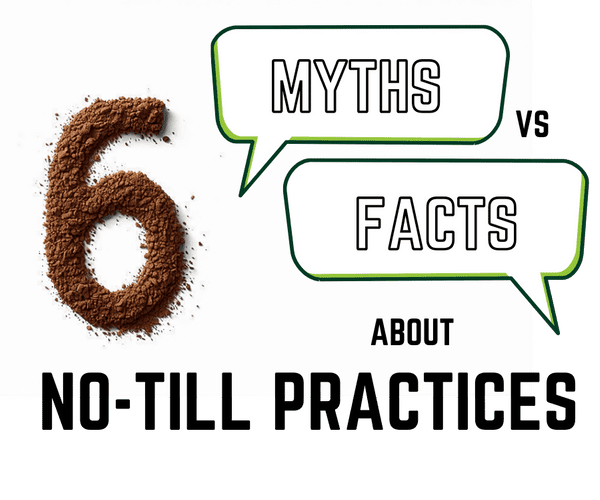
October 31, 2024
Transitioning to no-till practices can feel like a leap, especially if you've heard mixed messages about what it might mean for your crops. Here, we tackle some common myths and facts to help farmers decide if no-till could work for them. Myth: “No-till will reduce my yields in corn and soybean production.” Fact: Studies and farmer experience show that no-till practices can actually improve yields over time. No-till protects soil from erosion and retains moisture, helping crops perform well in dry years. While the transition may take time for soil to adjust, no-till farmers often see better organic matter, which improves water retention and nutrient availability — key factors for yield resilience. Myth: “I’ll have more weed pressure if I don’t till my fields.” Fact: No-till changes weed dynamics, but it doesn’t automatically mean more weeds. With a robust weed management plan — like cover crops, timely herbicide applications, and crop rotations — many no-till farmers report no increase in weeds and even find that cover crops help suppress them. Over time, some even report reduced weed pressure as healthier soils lead to better crop competition. Myth: “Soils will get compacted without tillage.” Fact: While it’s true that compaction is a concern for any field, no-till practices can actually reduce compaction over time. By keeping roots and organic matter in place, no-till builds soil structure, increasing aeration and reducing bulk density. Deep-rooted cover crops like radishes also help alleviate compacted layers naturally, improving soil resilience without the need for tillage. Myth: “No-till only works in dry regions.” Fact: No-till can benefit farmers in both dry and wetter climates. In Illinois, for example, where conditions can vary year to year, no-till helps stabilize moisture levels by improving soil organic matter and structure. This keeps more water available to crops during dry spells and prevents erosion during heavy rains. With appropriate drainage and cover crops, no-till can support strong yields in a variety of climates. Myth: “No-till requires completely new and expensive equipment.” Fact: While some modifications may help, you don’t need to overhaul your entire setup to start no-tilling. Small adjustments to planters, like adding no-till coulters or residue managers, can often make your current equipment work. Many farmers start with small, affordable changes before investing in new tools, especially as they evaluate no-till on a few trial acres. Myth: “My yields will drop right away if I go no-till.” Fact: The transition phase may bring slight yield adjustments, but this is usually temporary. In the first couple of years, soils are building up structure, and organic matter is increasing. Most no-till farmers report that yields stabilize and often increase within three to five years, with the added benefit of greater soil health and resilience. Embrace the Benefits of No-Till: No-till practices may not be a “one-size-fits-all” solution, but with proper management, they offer valuable benefits like healthier soils, lower fuel costs, and better moisture retention. Understanding the realities and debunking these myths can help farmers make informed choices about if, when, and how to transition to no-till for their unique operations. Starting small and adjusting as you go can open the door to a healthier soil profile and a more resilient farm operation. Check out the data that Precision Conservation Management has collected anonymously from Illinois farmers to see more on what works and is most profitable on Illinois farms.

October 28, 2024
IL Corn Growers Association (ICGA) is excited to announce the 3rd annual scholarship program for students choosing to pursue a degree in the agriculture field. The submission period for the scholarship period is now open and the application deadline is January 31, 2025, by 11:59 p.m. CST. "We're excited to deepen our commitment to supporting the next generation," said Dave Rylander, ICGA President and Victoria, Illinois farmer. "Our aim is to make sure that financial barriers don't stop anyone from following a career in agriculture. While this support may not cover all educational costs, we’re eager for the difference it can make." ELIGIBILITY REQUIREMENTS Applicant must be a high school senior or a post-secondary student. Applicants must be pursuing a degree in an agriculture field in Illinois. The application must be submitted by January 31, 2025, by 11:59 p.m. Central Time. Scholarship winner must attend at least one IL Corn leadership meeting or event within a year of receiving scholarship. Applicant must have an active ICGA membership* Each applicant is eligible to receive the IL Corn scholarship only once; previous recipients are not eligible to apply again. APPLICATION REQUIREMENTS: Below are the specific requirements for the IL Corn Growers Association Scholarship that are a part of the online application process by clicking the green button below: A completed online application. At least one letter of recommendation from non-family member(s). Current resume. Completed Essay Questions What are the three most important issues facing agriculture today? How would you address them? How do you plan to use this scholarship? Why are you pursuing an ag-related career? *Parent, sponsor or own membership. A sponsor can be a farmer or ag industry sponsor. Must provide their member number in application process.

October 24, 2024
In this audio interview, Jared White from Brownfield Ag speaks with Chris Nicholas, president and co-founder of Lakril Technologies, about an exciting innovation: turning corn into sustainable acrylics. You'll hear how Lakril is using bio-based sugars, derived from corn, to create environmentally-friendly alternatives to petroleum-based chemicals. Nicholas shares insights into how this technology could significantly reduce the carbon footprint of everyday products like paints, coatings, and even diapers. Tune in to learn more about this cutting-edge development and its potential impact on corn demand.
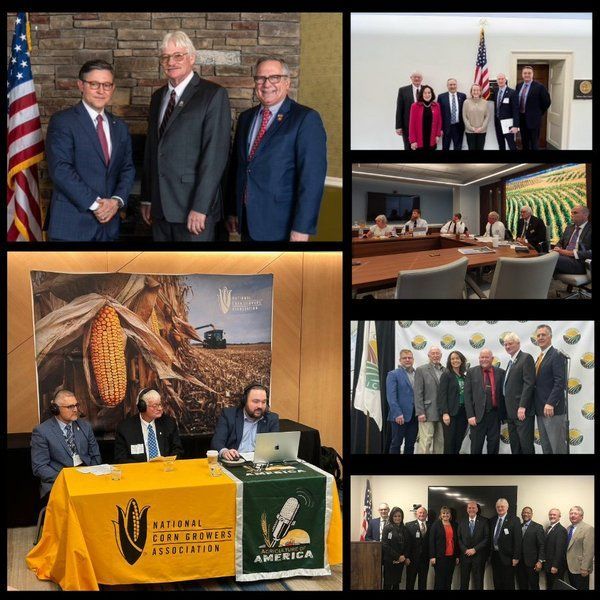
October 23, 2024
It’s October, and at the National Corn Growers Association that means we’re starting a new fiscal year, and we have a new grower at the top of the organization. This month, Kenneth Hartman Jr. began his term as NCGA president. I decided to ask four key questions of Kenneth that I thought would help you and other growers get to know our new leader. Brooke. Thank you, Kenneth, for agreeing to do this interview. I know it’s been a whirlwind week for you. Let’s start by having you tell us a little about yourself and where you’re from. Kenneth: I am a fifth-generation farmer from Waterloo, Ill., a town 25-miles south of St. Louis. I operate a corn and soybean farm along with my wife Anita, mother Joann and daughter Amanda. Along with farming, I have been deeply engaged in advocacy on behalf of growers. I have served on the NCGA board for six years in a variety of leadership roles and as a past president of the Illinois Corn Growers Association and past chairman of the Illinois Corn Marketing Board. I am also a member of the Illinois Leadership Council for Ag Education.
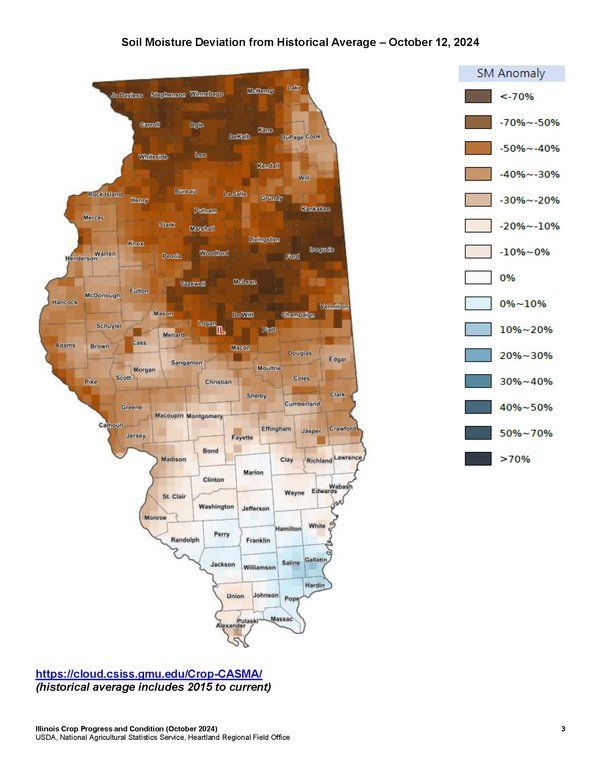
October 22, 2024
With dry conditions persisting, applying anhydrous ammonia may not be your best move right now. Not only could it be a waste of money, but it could also harm the environment. Here’s what you need to know before you pull the trigger. Why Dry Soil is a Problem Moisture is essential for holding ammonia in the soil. When you apply anhydrous ammonia to dry, cloddy soil, the lack of moisture prevents the ammonia from attaching to clay or organic matter. This can result in significant losses either during injection or as ammonia seeps through the large pores between soil clods after application. Key Signs to Watch for When applying anhydrous ammonia in dry conditions, be mindful of what's happening in the field. Here are a few critical signs that something’s off: Ammonia escaping: If you smell ammonia or notice white vapor (which is actually water vapor), it’s likely escaping. Cloddy or smearing soil: If the soil breaks into clods, or the knife smears through the soil, the ammonia may not be held in place. Poor soil coverage: If there isn’t good coverage of the knife track with loose soil, the ammonia is at risk of escaping.
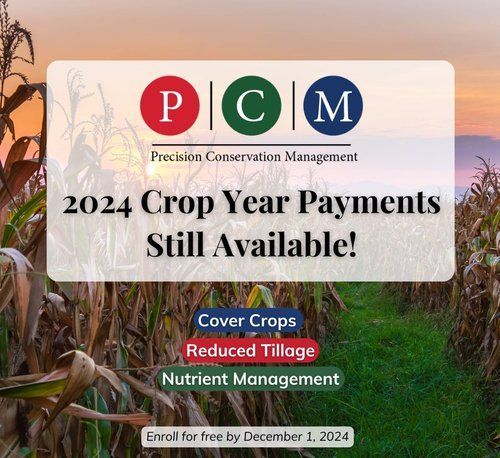
October 18, 2024
Thin margins this year make it crucial to take advantage of any opportunity to protect your bottom line. That’s why now is the perfect time to consider enrolling in Precision Conservation Management (PCM) for free before December 1st! You could be eligible for payments based on in-field practices you used this year. PCM is the premier conservation program of the IL Corn Growers Association. It was created by farmers, for farmers to protect farm profitability as we work towards greater environmental goals. “PCM has been a valuable tool for me and my operation,” says Champaign County farmer Tony Stierwalt. “We get value from not only the data but also the knowledge each PCM Specialist has on current programs we can get funding through that we otherwise might not know.”
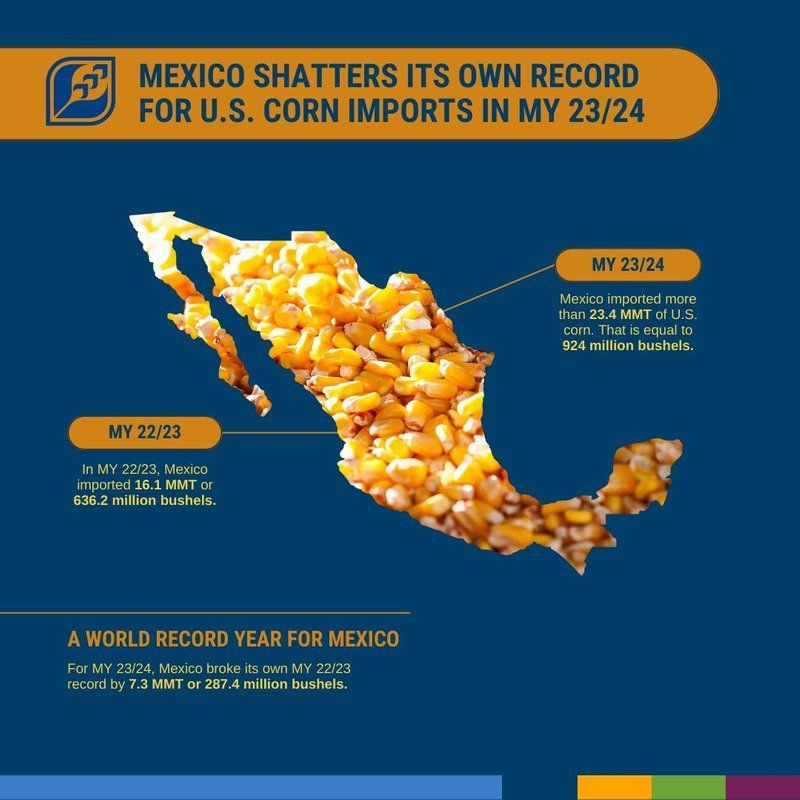
October 17, 2024
The numbers are in from Marketing Year (MY) 23/24, and Mexico has officially shattered its own record for U.S. corn imports, blowing past the previous high set by China! In MY 22/23, Mexico imported 16.1 million metric tons (MMT), or 636.2 million bushels, of U.S. corn. This past year, Mexico raised the bar even higher, importing over 23.4 MMT—an astounding 924 million bushels—breaking their own record by 7.3 MMT or 287.4 million bushels. >>To put it in perspective, this is more than double the amount imported by the second-largest market, Japan. These record-breaking imports are vital to Illinois farmers, who export nearly 50% of the corn grown in Illinois out of state. Mexico’s strong demand ensures continued opportunities for Illinois corn, driving economic growth for the state's agriculture. As the numbers show, Mexico remains a powerhouse market for U.S. corn.

October 17, 2024
OTTAWA, Ill. — On October 11, 2024, the Illinois Soybean Association (ISA) and IL Corn Growers Association (ICGA) joined the U.S. Army Corps of Engineers to host Rep. Lauren Underwood at the Starved Rock Lock and Dam. During the visit, Underwood toured the lock and dam system and discussed the system’s vital role in the transportation of agricultural products such as corn, soybeans, grain, and other goods critical to the state’s economy. As the largest soybean-producing state and second largest corn-producing state in the country, Illinois plays a critical role in feeding both domestic and international markets. Efficient infrastructure at locks and dams like Starved Rock is vital not only for Illinois farmers but for all American farmers, ensuring that U.S. crops, including corn and soybeans, can be transported swiftly and cost-effectively, keeping American agriculture competitive on the global stage.
Articles
2025
2024
2023
2022
2021
2020

